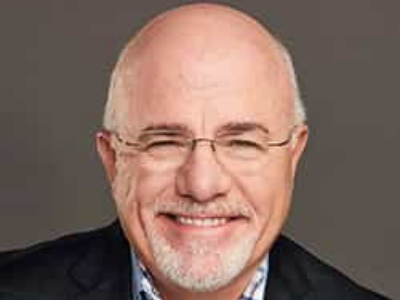First female Archbishop of Canterbury still an outlier among world's top religious leaders
News > Religion News

Audio By Carbonatix
2:21 PM on Friday, October 3
By DAVID CRARY, HOLLY MEYER, DEEPA BHARATH and MARIAM FAM
For the first time, a woman will serve as the Archbishop of Canterbury, following the 105 men who have held the role since St. Augustine took the position in the year 597.
This means Bishop of London Sarah Mullally has broken through the Church of England’s highest stained-glass ceiling. But for many of the world’s religions, that barrier to women in top leadership remains firmly intact.
Here is a look at how high women in ministry have been able to climb in some of the major faith traditions.
As the Archbishop of Canterbury, Mullaly will also lead the Anglican Communion in her new role, which the communion describes as the first among equals. It has more than 85 million members spread across 165 countries and many still believe the Bible requires male-only leadership.
One exception is the Episcopal Church in the United States. Katharine Jefferts Schori was elected to serve as the presiding bishop of that Anglican province in 2006.
In addition to the Episcopal Church, other mainline Protestant denominations in the U.S. have had female leaders.
The Rev. Elizabeth Eaton recently finished 12 years as the first woman to be presiding bishop of the Evangelical Lutheran Church in America, the largest U.S. Lutheran body. The United Methodist Church has had women serve as president of its powerful Council of Bishops, including the current president — Tracy Smith Malone. In 2023, the Rev. Karen Georgia Thompson became the first woman to lead the United Church of Christ as its general minister and president.
Among evangelical churches, there are some female pastors. But the largest evangelical denomination, the Southern Baptist Convention, has maintained an all-male leadership and bars women from serving as pastors at SBC-affiliated churches.
In the U.S., most major Black Christian denominations have no doctrinal bar to ordained women leaders in the way that some denominations do, and women have preached and been ordained in historically Black churches since at least the 19th century.
Yet denominational leadership remained all-male until the 21st century, and women are still the exception in the top rungs. One example is Vashti Murphy McKenzie, who in 2000 was elected the first woman bishop in the African Methodist Episcopal Church.
The Catholic Church makes a distinction between ministry and management when it comes to women’s leadership roles.
The church bars women from ordained ministry, meaning they cannot be priests or deacons, on the grounds that Christ’s apostles were all men. Women have however reached high levels of church management, especially under Pope Francis.
The late pope promoted several nuns to senior Vatican positions, including the first-ever female prefect of a Holy See department, and gave women the right to vote at major Vatican gatherings known as synods.
Commonly known as the Mormon church, The Church of Jesus Christ of Latter-day Saints is currently going through a leadership transition following the death of its president, Russell M. Nelson.
Every church president since its founding in 1830 has been a man — and the next person to lead the more than 17 million-member, global church will be too. That is in keeping with the faith’s all-male priesthood.
The highest-ranking women in the church oversee organizations that run programs for women and girls. These sit below several layers of leadership groups reserved for only men.
The gender situation within Judaism is markedly different in Israel and the United States, which together account for more than 80% of the world’s Jewish population.
The largest U.S. branches, Reform and Conservative, allow women to be rabbis, while the Orthodox branch does not. In Israel, the Conservative and Reform movements are small, and Orthodox authorities hold a near monopoly on all matters regarding Judaism.
Unlike the Church of England, not all faith traditions, including Islam, have a centralized hierarchical structure, and therefore do not have an equivalent role to that of the Archbishop of Canterbury.
Among Islam's some 2 billion adherents around the world, women don’t lead mixed-gender congregational prayers in traditional Muslim settings and the top formal ranks of Islamic authorities have been largely filled with men.
Still, many Muslim women have been occupying other leadership roles in Islamic spaces in their communities, including as religious scholars, preachers, and, in some cases, religious courts judges.
Different cultural norms or theological and scholarly interpretations can lead to varying views and debates on the permissibility, scope or boundaries of certain roles. Some Muslims have been pushing to expand women’s roles in Islamic spaces and pointing to historic examples from the Islamic heritage.
Instead of a single, centralized figure or body, authority in Hinduism is derived from sacred texts, tradition and the teachings of spiritual teachers and monastic leaders.
Structured similarly, authority in Buddhism stems from the Buddha’s teachings, those acknowledged as enlightened individuals and community consensus, with scripture serving as guidance rather than a definitive source of all rules.
Both religions have numerous sects and orders with their own leaders and a small number of them are women.
In Hinduism, some examples include Mata Amritanandamayi, a 72-year-old Indian spiritual leader, who hails from a marginalized fishing community and now oversees her own spiritual and charitable organization. Examples can also be found in the Ramakrishna Order, which has a separate branch for female monks who establish and lead their own monasteries around the world.
In Buddhism, more women are pushing for ordination and for elevation to higher titles. Some schools, such as Soto Zen, the largest in Japan and with large numbers of Western practitioners, are more open to female leaders and have several abbesses in their ranks.
Sikhism, which by some counts is the fifth largest religion in the world, is also male-dominated.
None of the 10 Gurus, the human spiritual teachers of the faith, were female. Women are also significantly underrepresented in the Shiromani Gurdwara Parbandhak Committee, the body that oversees many gurdwaras in India. Bibi Jagir Kaur was the first woman to be elected president of the committee in 1999 and again in 2004.
In many gurdwaras, certain rituals like carrying the palanquin containing the Guru Granth Sahib, the Sikh holy scripture, or performing spiritual music (kirtan) at the Golden Temple in Amritsar, the holiest Sikh shrine, have remained largely male-dominated.
Those norms are slowly changing in other parts of the world including North America where several women have formed kirtan groups.
___
Associated Press religion coverage receives support through the AP’s collaboration with The Conversation US, with funding from Lilly Endowment Inc. The AP is solely responsible for this content.






